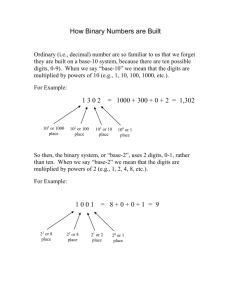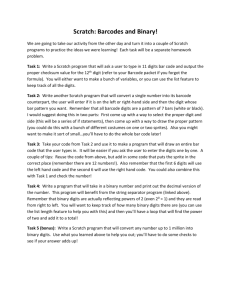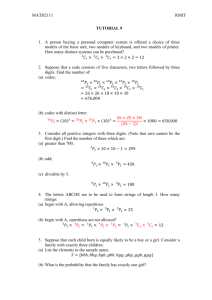Numbersystems
advertisement
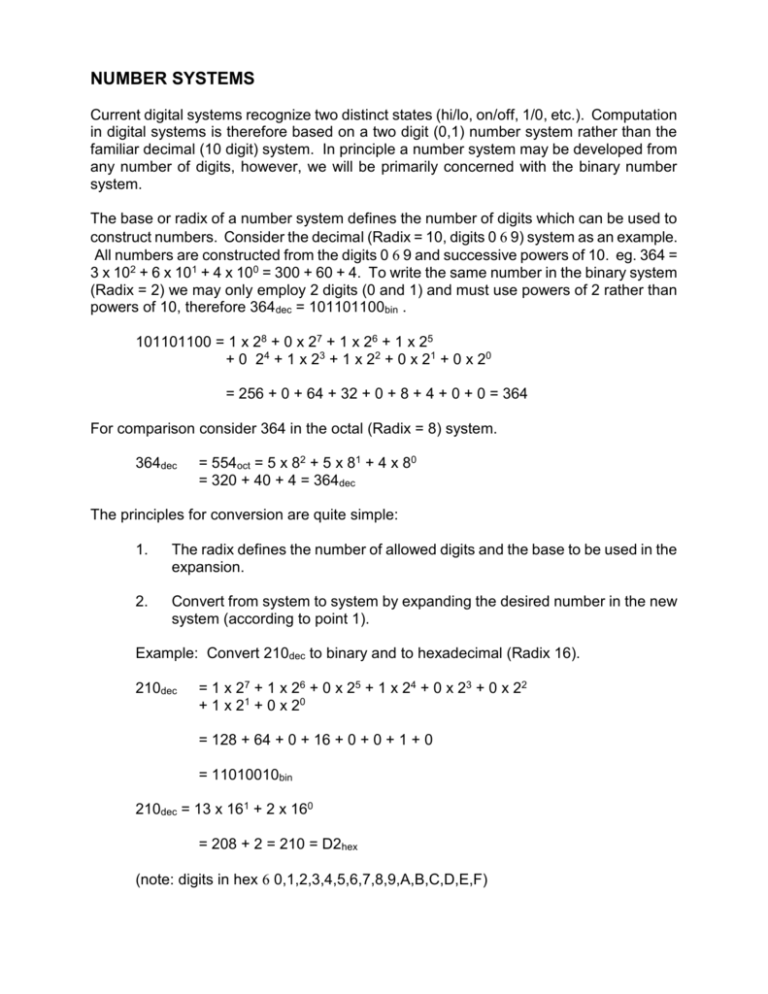
NUMBER SYSTEMS Current digital systems recognize two distinct states (hi/lo, on/off, 1/0, etc.). Computation in digital systems is therefore based on a two digit (0,1) number system rather than the familiar decimal (10 digit) system. In principle a number system may be developed from any number of digits, however, we will be primarily concerned with the binary number system. The base or radix of a number system defines the number of digits which can be used to construct numbers. Consider the decimal (Radix = 10, digits 0 9) system as an example. All numbers are constructed from the digits 0 9 and successive powers of 10. eg. 364 = 3 x 102 + 6 x 101 + 4 x 100 = 300 + 60 + 4. To write the same number in the binary system (Radix = 2) we may only employ 2 digits (0 and 1) and must use powers of 2 rather than powers of 10, therefore 364dec = 101101100bin . 101101100 = 1 x 28 + 0 x 27 + 1 x 26 + 1 x 25 + 0 24 + 1 x 23 + 1 x 22 + 0 x 21 + 0 x 20 = 256 + 0 + 64 + 32 + 0 + 8 + 4 + 0 + 0 = 364 For comparison consider 364 in the octal (Radix = 8) system. 364dec = 554oct = 5 x 82 + 5 x 81 + 4 x 80 = 320 + 40 + 4 = 364dec The principles for conversion are quite simple: 1. The radix defines the number of allowed digits and the base to be used in the expansion. 2. Convert from system to system by expanding the desired number in the new system (according to point 1). Example: Convert 210dec to binary and to hexadecimal (Radix 16). 210dec = 1 x 2 7 + 1 x 26 + 0 x 25 + 1 x 24 + 0 x 23 + 0 x 22 + 1 x 2 1 + 0 x 20 = 128 + 64 + 0 + 16 + 0 + 0 + 1 + 0 = 11010010bin 210dec = 13 x 161 + 2 x 160 = 208 + 2 = 210 = D2hex (note: digits in hex 0,1,2,3,4,5,6,7,8,9,A,B,C,D,E,F)
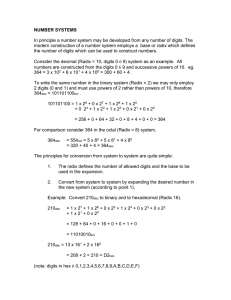
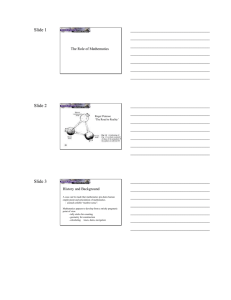
![[#JSCIENCE-125] Mismatch: FloatingPoint radix 10](http://s3.studylib.net/store/data/007823822_2-f516cfb5ea5595a8cacbd6a321b81bdd-300x300.png)

